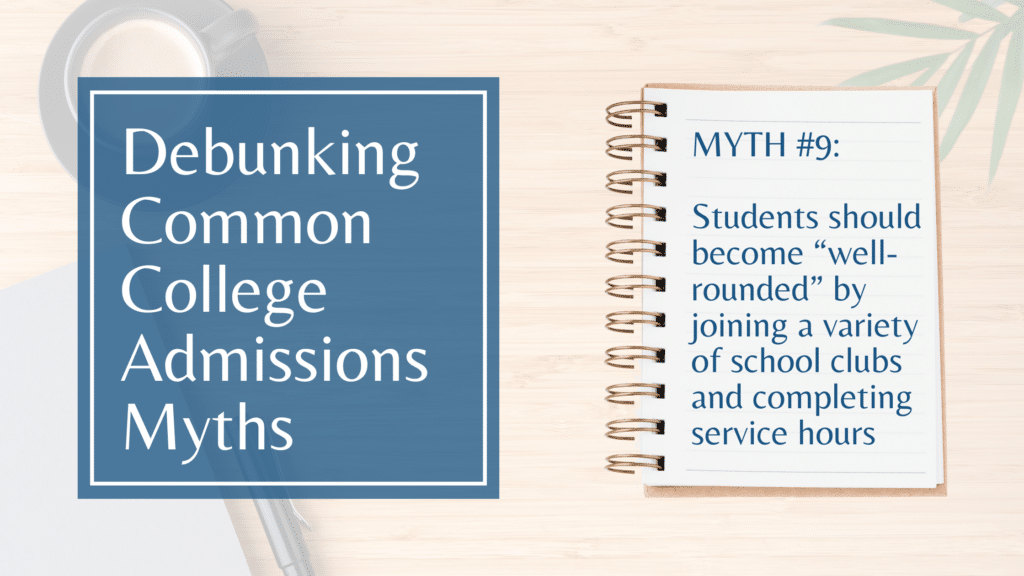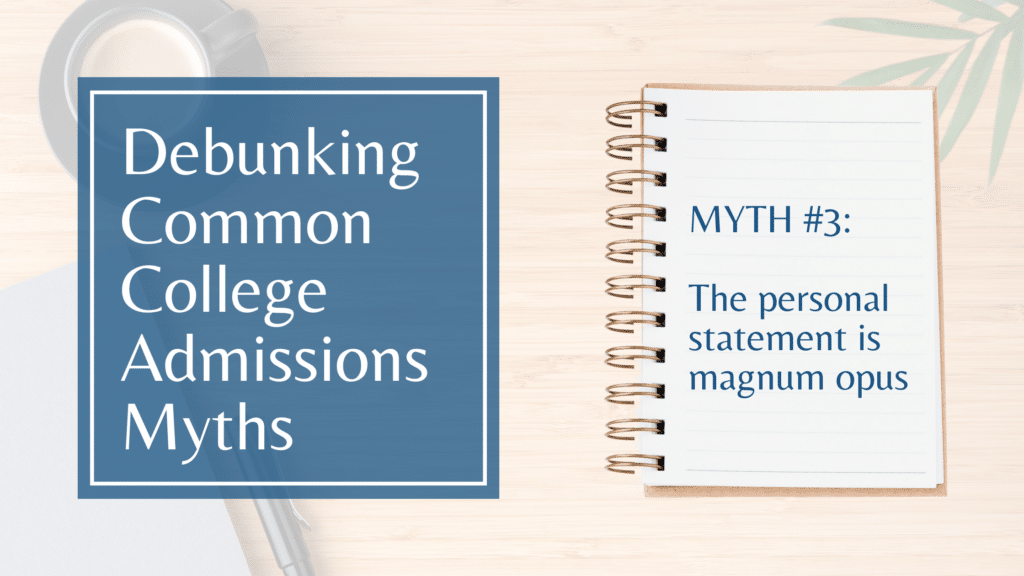MYTH #11: Students must follow a predetermined linear path after high school

Debunking Common College Admissions Myths
MYTH #10: To demonstrate leadership, students must lead school clubs or sports teams

Debunking Common College Admissions Myths
MYTH #9: Students should become “well-rounded” by joining a variety of school clubs and completing service hours

Debunking Common College Admissions Myths
MYTH #8: Students should always take the hardest classes offered by their high schools

Debunking Common College Admissions Myths
MYTH #7: Applying Via An Early Decision Plan Eliminates Choice

Debunking Common College Admissions Myths
MYTH #6: With top grades and test scores, students can get into any college of their choosing

Debunking Common College Admissions Myths
MYTH #5: Test-optional policies eliminate the need to take standardized tests

Debunking Common College Admissions Myths
MYTH #4: High school classmates are competing for the “same spots” in the college admissions process

Debunking Common College Admissions Myths
MYTH #3: The personal statement is magnum opus

Debunking Common College Admissions Myths
MYTH #2: Students with the highest grades and test scores are the most “qualified”

Debunking Common College Admissions Myths

